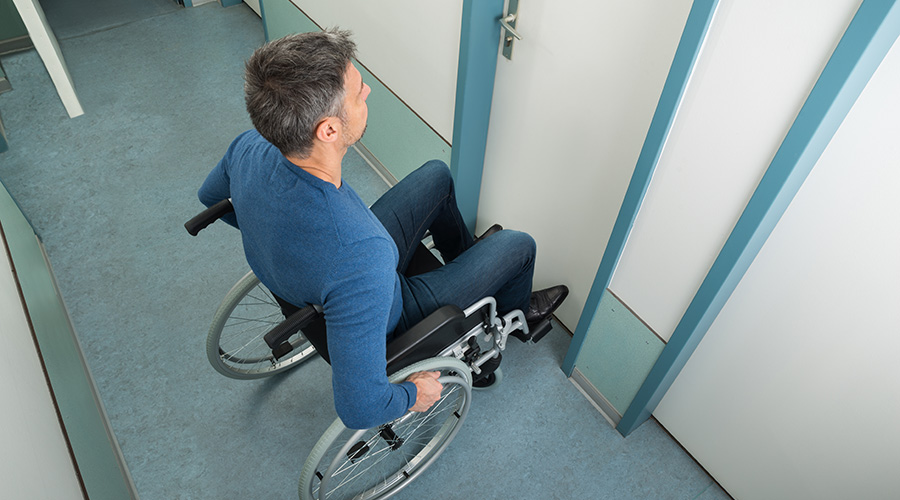Rethinking Access and its Benefits for All
 Once again, rethinking the way facilities accommodate people with disabilities — or more accurately, the way they don’t — could produce benefits for all building occupants.
Once again, rethinking the way facilities accommodate people with disabilities — or more accurately, the way they don’t — could produce benefits for all building occupants.
This phenomenon has shown up repeatedly as managers, owners and architects have taken a closer look at all aspects of institutional and commercial facilities in an effort to remove barriers to access. While these efforts have achieved that goal in most cases, the process also has brought unexpected results.
Consider accessible restroom entrances. By replacing entrance doors with short hallways that block sight lines, designers eliminated a barrier that visitors with disabilities had to struggle with. But eliminating doors and their handles also freed every visitor from having to touch surfaces that were potentially laden with germs. The result? Improved restroom hygiene for all.
Or how about heavy entrance doors on facilities? Such doors tend to generate the most complaints from people using buildings. Again, they represent major barriers for people with disabilities trying to enter the building. Organizations responded by specifying power-assisted door operators for new construction projects and retrofitting them into existing buildings. The change removes the barrier for people with disabilities. But it does the same for everyone entering the building, including delivery personnel, parents pushing strollers, and people pulling briefcases on wheeled carts.
One of the most recent examples of an accessibility change that would benefit a larger group of occupants involves elevators. Tall-building occupants learned long ago to heed the signs directing them to stairs and away from elevators in case of a fire. But people with disabilities often have no choice but to use elevators because of the barrier to egress created by steps. Occupants with injuries or illnesses or who are pregnant also can have problems using stairs.
So could a change to fire-evacuation strategies incorporating elevators to help these occupants actually benefit all occupants? The answer could be yes.
“Elevator evacuation ... would enable people with disabilities to self-evacuate with all the other building occupants,” according to Richard Bukowski, a fire prevention engineer with the National Institutes of Standards and Technology (NIST) in a recent presentation. “Elevator systems in modern high-rise commercial buildings are designed to move a building’s entire population in or out of a building in one hour or less.” Elevators could be reprogrammed to move those with the longest distance to go first.
“People with disabilities would not need to be given any priority, since all occupants would be accommodated equally in this system,” he says.
NIST will sponsor a conference next April, Rethinking Egress, to consider the benefits of elevator evacuations. For more information, visit www.nist.gov.
Such a change might or might not take place. But the discussion is evidence once again that changes to facilities that remove barriers to access can benefit all occupants. Sometimes, creating such benefits involves rethinking the common wisdom about facilities and how we use them.
Related Topics:








 Once again, rethinking the way facilities accommodate people with disabilities — or more accurately, the way they don’t — could produce benefits for all building occupants.
Once again, rethinking the way facilities accommodate people with disabilities — or more accurately, the way they don’t — could produce benefits for all building occupants.


